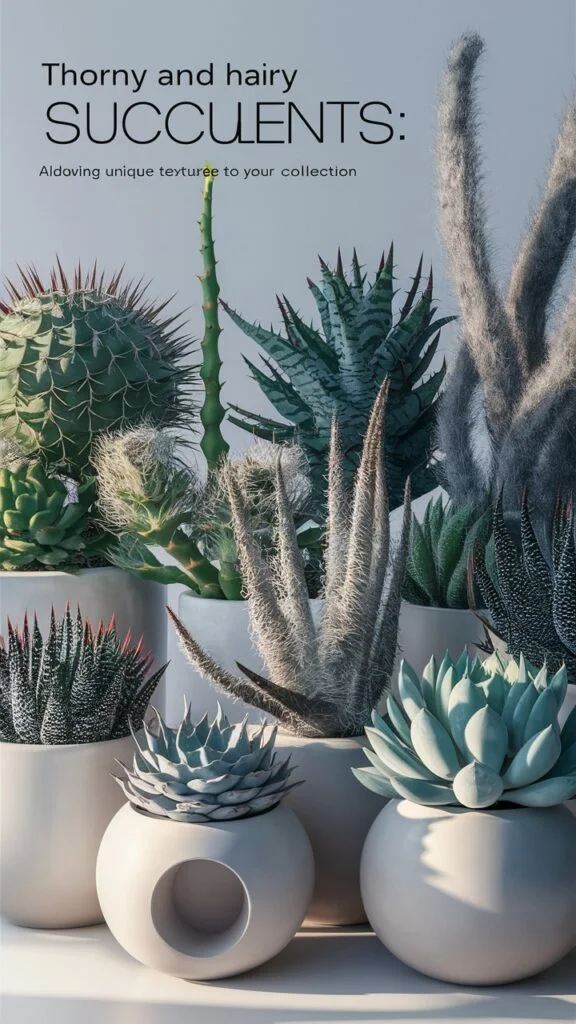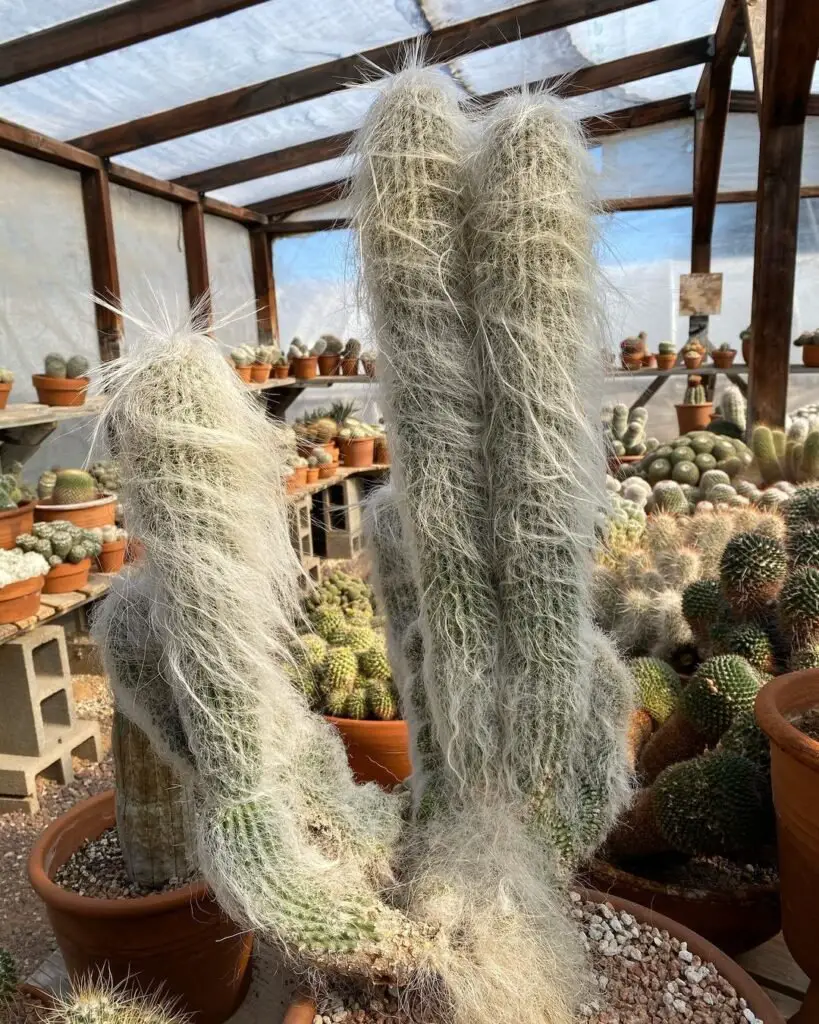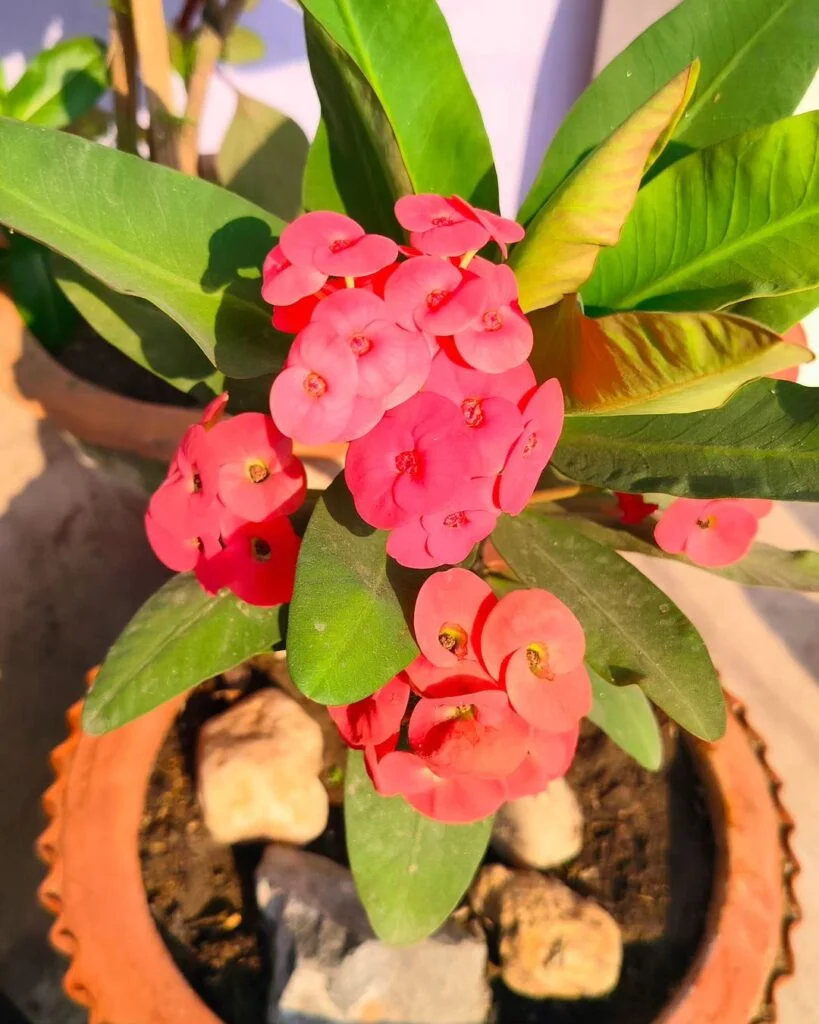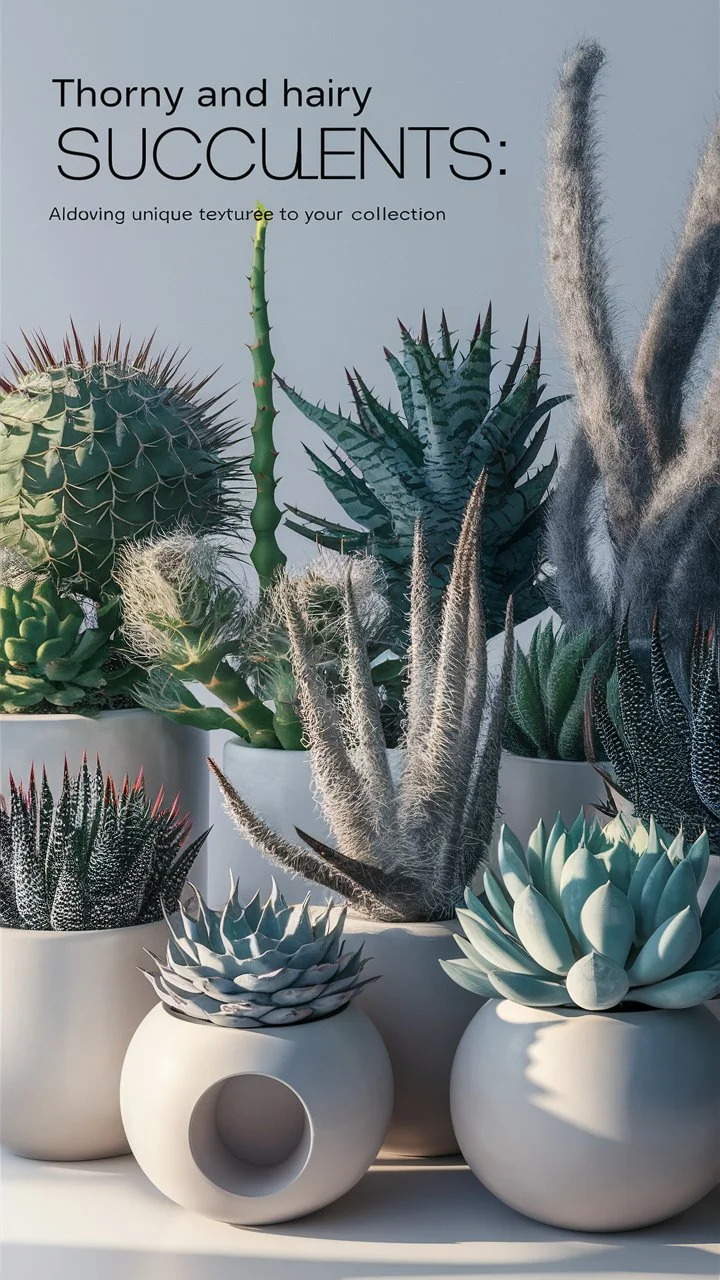Explore the fascinating world of thorny and hairy succulents in 2024. Learn expert care tips and discover how these unique plants can add striking texture to your succulent collection.
Thorny and hairy succulents are fascinating and distinctive plants known for their protective spines and fuzzy leaf coverings that create incredible textural effects. These drought-tolerant, defensive specialists are perfect for both indoor collections and outdoor xeriscaping, offering unique architectural elements and visual interest. Their remarkable adaptations and striking appearances make them popular choices for both succulent enthusiasts and experienced botanists in 2024.
Hello, I’m Ashley Scott, a horticulturist with over 15 years of experience in ornamental plant cultivation and landscape design. Today, I’m excited to share my knowledge about thorny and hairy succulents, a fascinating group of plants that have become increasingly popular in modern garden designs and indoor collections. Their unique adaptations and striking appearances make them perfect statement pieces for both novice enthusiasts and experienced collectors.
Understanding Thorny and Hairy Succulents

Thorny and hairy succulents represent specialized adaptations in the succulent family. These features serve multiple purposes:
- Protection against herbivores
- Shade creation for sensitive plant tissues
- Water collection from atmospheric moisture
- Temperature regulation in extreme environments
Popular Varieties in 2024
Hairy Types:

- Old Man Cactus (Cephalocereus senilis)
- Distinctive white hair-like spines
- Can grow up to 50 feet tall in natural habitats
- Popular as a collector’s item
- Woolly Senecio (Senecio haworthii)
- Silvery-white, fuzzy leaves
- Compact growth habit
- Perfect for container gardens
- Panda Plant (Kalanchoe tomentosa)
- Thick, fuzzy leaves with brown edges
- Upright growth pattern
- Excellent for indoor cultivation
Thorny Types:

- Crown of Thorns (Euphorbia milii)
- Sharp thorns along stems
- Colorful bracts throughout the year
- Drought-tolerant
- Devil’s Backbone (Euphorbia tithymaloides)
- Zigzag stems with thorny projections
- Unique architectural form
- Low maintenance
Growing Requirements
Climate and Hardiness
Most thorny and hairy succulents thrive in USDA zones 9-11, though they make excellent houseplants in any climate when provided proper conditions.
Optimal Growing Conditions
- Light: Bright, indirect to full sun
- Soil: Well-draining cactus mix
- Water: Allow soil to dry between waterings
- Temperature: 65-80°F (18-27°C)
- Humidity: Low to moderate
Care and Maintenance Tips
Watering Guidelines
- Water deeply but infrequently
- Reduce watering in winter
- Avoid getting water on hairy leaves to prevent rot
Soil and Fertilization
- Use specialized cactus/succulent potting mix
- Add extra perlite or pumice for improved drainage
- Fertilize sparingly during growing season
Safety Considerations
- Wear thick gloves when handling
- Keep away from children and pets
- Use long-handled tools for maintenance
Design Applications
Indoor Displays
- Use as focal points in succulent arrangements
- Place in bright windowsills
- Combine with smooth-leaved succulents for texture contrast
Outdoor Gardens
- Rock garden features
- Desert landscape elements
- Container compositions
Troubleshooting Common Issues
Health Problems
- Yellow leaves
- Usually indicates overwatering
- Improve drainage and reduce watering frequency
- Sparse growth
- Often due to insufficient light
- Gradually increase light exposure
- Pest infestations
- Check for mealybugs and spider mites
- Treat with neem oil or insecticidal soap
Propagation Methods
Successful Propagation Techniques
- Stem cuttings (allow to callus before planting)
- Leaf propagation for some varieties
- Division of offsets or pups
- Seeds for experienced growers
Seasonal Care
Winter Care
- Reduce watering significantly
- Protect from frost
- Move indoor plants away from cold windows
Summer Care
- Provide afternoon shade in hot climates
- Increase watering frequency
- Monitor for heat stress
Creative Display Ideas
Arrangement Suggestions
- Desert Diorama
- Combine different thorny and hairy species
- Add mineral specimens
- Use sand or gravel top dressing
- Modern Minimalist
- Single specimen as focal point
- Clean-lined containers
- Monochromatic color scheme
Thorny and hairy succulents offer fascinating textures and forms that can enhance any plant collection. Their unique adaptations not only make them visually striking but also incredibly resilient. With proper care and attention to their specific needs, these architectural plants can thrive and provide years of interest in both indoor and outdoor settings.
Remember that while their defensive features may make them seem intimidating, these amazing plants are often some of the most rewarding to grow, offering a distinctive touch to any space they occupy.
For more gardening tips and plant care guides, visit usagardenhub.com




